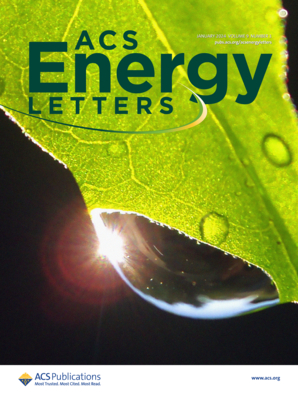Machine Learning Prediction of Organic–Inorganic Halide Perovskite Solar Cell Performance from Optical Properties
IF 19.3
1区 材料科学
Q1 CHEMISTRY, PHYSICAL
引用次数: 0
Abstract
Numerical toolsets have the potential to enable accelerated development of hybrid organic–inorganic halide perovskite (HOIP) solar cells. In the present study, we develop a machine learning (ML) approach that accurately predicts the current–voltage behavior of 3D/2D-structured (FAMA)Pb(IBr)3/OABr HOIP solar cells under AM1.5 illumination. Using measured responses from 368 devices, we train a neural network (NN) with three optical inputs of constituent HOIP films (transmission, spectrally resolved photoluminescence, and time-resolved photoluminescence) to predict the solar cell’s open-circuit voltage (Voc), short-circuit current (Jsc), and fill factors (FF). The model achieves 91%, 94%, and 89% accuracy for 95% of Voc, Jsc, and FF predictions, with coefficient of determination (R2) values of 0.47, 0.77, and 0.58, respectively. By linking ML predictions to extracted physical parameters from the measured HOIP films optical properties, we identify key factors influencing the prediction results. Furthermore, we develop separate ML-classification algorithms that identify degraded solar cells with >90% accuracies using the same optical data. This work demonstrates an efficient, nondestructive approach for HOIP solar cell assessment that can assist in accelerating the next generation of perovskite solar cell developments.

求助全文
约1分钟内获得全文
求助全文
来源期刊

ACS Energy Letters
Energy-Renewable Energy, Sustainability and the Environment
CiteScore
31.20
自引率
5.00%
发文量
469
审稿时长
1 months
期刊介绍:
ACS Energy Letters is a monthly journal that publishes papers reporting new scientific advances in energy research. The journal focuses on topics that are of interest to scientists working in the fundamental and applied sciences. Rapid publication is a central criterion for acceptance, and the journal is known for its quick publication times, with an average of 4-6 weeks from submission to web publication in As Soon As Publishable format.
ACS Energy Letters is ranked as the number one journal in the Web of Science Electrochemistry category. It also ranks within the top 10 journals for Physical Chemistry, Energy & Fuels, and Nanoscience & Nanotechnology.
The journal offers several types of articles, including Letters, Energy Express, Perspectives, Reviews, Editorials, Viewpoints and Energy Focus. Additionally, authors have the option to submit videos that summarize or support the information presented in a Perspective or Review article, which can be highlighted on the journal's website. ACS Energy Letters is abstracted and indexed in Chemical Abstracts Service/SciFinder, EBSCO-summon, PubMed, Web of Science, Scopus and Portico.
 求助内容:
求助内容: 应助结果提醒方式:
应助结果提醒方式:


